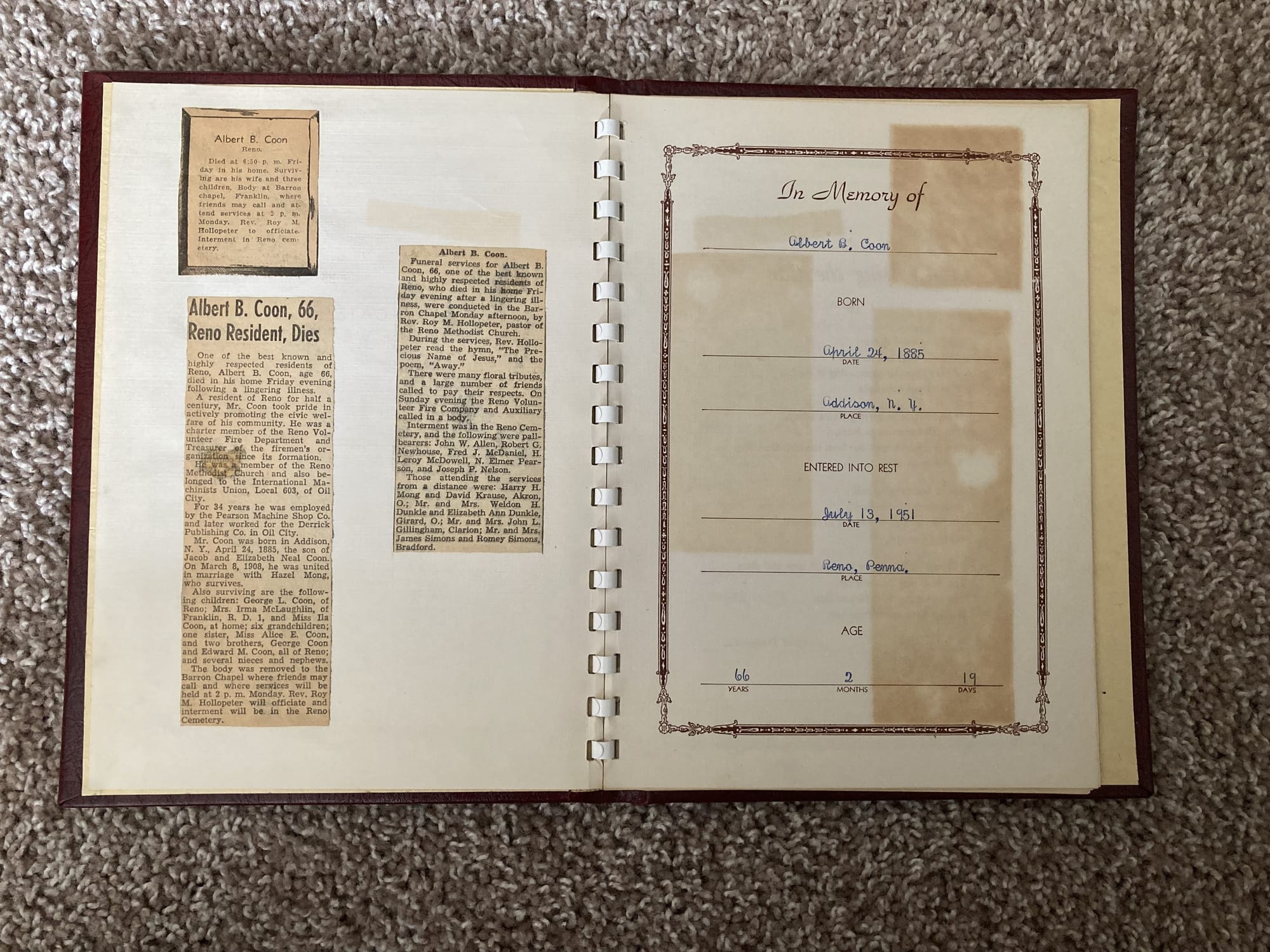Creepy Collections: What Lurks in the Archive

When we start talking about spooky things, oftentimes what comes to mind might be scary movies, creepy stories, or things you see in the dark. However, those might not be the first things that an archivist thinks of. Knowing that an archive is a collection of records, and an archivist is the person that maintains and manages them, what could we find in a collection that would scare an archivist?
Something that unfortunately finds its way into archival collections all around the world and worries archivists to no end is metal. Metals like steel that are commonly found in paperclips and staples rust fairly easily. Because paper clips and staples are so commonly used with papers in many different settings, it is not unheard of for these items to be found with regularity inside of archival collections. Why would that scare an archivist? Rust can permanently damage paper items and photographs. Rusted staples or paper clips can create marks that cannot be removed. And these items do not take long to rust! With a bit of relative humidity, dust, and age, rust can develop in as little as a few days, leaving archives at risk of permanent damage, which is a scary thought! Make sure to remove paperclips, staples, and other metal items from your collection in order to protect it.
A very real threat to any collection is mold. If items have been stored in damp conditions with poor air circulation, mold can begin to grow. Paper is an organic material which acts as a food source for mold, which creates staining, discoloration, and a weakening of the paper materials. It can be incredibly difficult or even impossible to remove the stains. Mold can also grow from one paper to another, allowing it to consume entire collections. The best place to store archival collections, if you don’t have access to a climate controlled storage room, is going to be a room that maintains a pretty well regulated temperature and air flow, not too hot or humid. Just like a horror movie, we want to stay out of the basement and the attic, as those conditions can lead to very scary consequences.
A very common culprit of archival mayhem of more modern times is the use of adhesive tape. The materials that make up tape breakdown over time and release acidic byproducts. Over time, these byproducts move from the surface of the tape to the paper item it is attached to. This can cause discoloration, specifically yellowing, and cause the material to become brittle. This can be seen very clearly in things like old scrapbooks, where the photos were taped onto pages. It is best to avoid using tape altogether in materials that are being saved. However, many times, our collections already have the tape on them when they come to us. The National Archives and the American Institute for Conservation have information on how to safely remove tape from documents.
One thing that is commonly preserved as a part of an archive that can do damage is newspapers and newspaper articles. The manufacturing process for newspaper allows it to retain aspects of the paper pulp that turns acidic when exposed to light, air, and environmental factors. That acidic breakdown means that the newspaper turns yellow and much more fragile. However, that yellowing is not limited to the newspaper itself; any paper that is in contact with the acidity in the paper is at risk for discoloration as well. While yellow might not be a classic halloween color, it can be very scary in an archive! So make sure to store your newspaper away from other materials in your collection. Use buffer paper between sheets of newspaper or between them and other papers to prevent acid transfer.

One of the worst things to see on an archival document is pen marks. Their ink can be acidic. It is prone to terrible fading. And the worst aspect is the potential for smearing, bleeding, and running. Most pens contain water-soluble inks, meaning that in high humidity or disastrous situations with water, the ink can run, leaving marks all over the document or photograph and distorting any information written on the material. There is also the possibility of bleeding through and permanently damaging more than one document or smearing across the face of the item in your collection. For this reason, it is best to use a good ole Number 2 pencil. The graphite in pencils is non-acidic, and the marks made are not permanent and can be erased.
One last thing that can be terrifying within an archive is liquids. Which is why many archives have a no beverages policy in the area where the archival materials can be examined. The damage that a spilled drink could do to an archive is quite high. It can distort and wrinkle paper, it can cause items to become fused together, and it can cause inks to run. All of this puts the information stored in the archive at risk. It would be horrible to lose valuable historic resources and information that is stored in these archives. It is always best practice to leave liquids far away from archival material.
As you can see, there are a lot of things that could scare an archivist! Thankfully, most of them have easy ways to prevent spooky mishaps. Be aware of what you are putting into an archive, be conscious of how you are handling the materials, and keep working hard to preserve these incredible materials!
